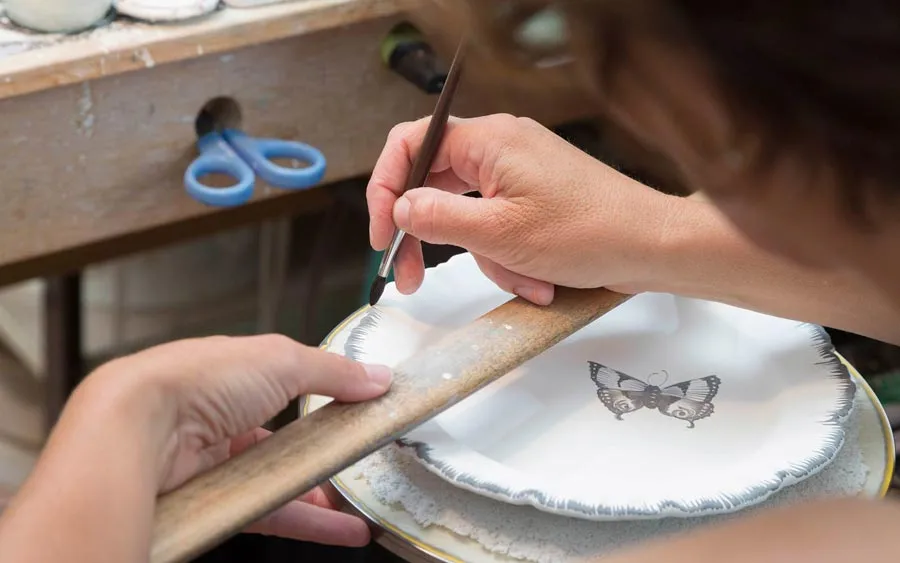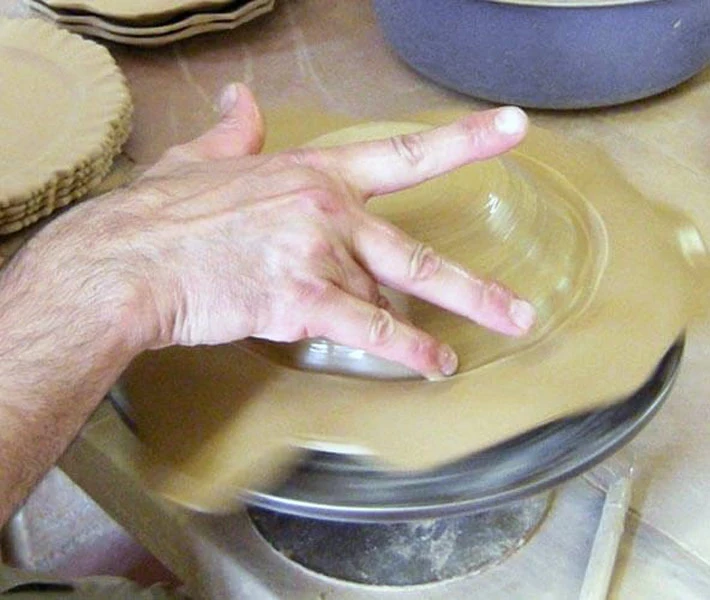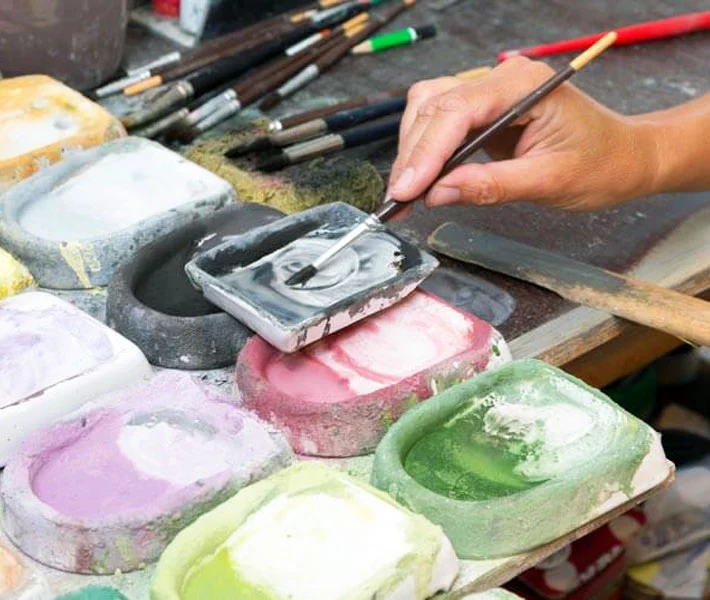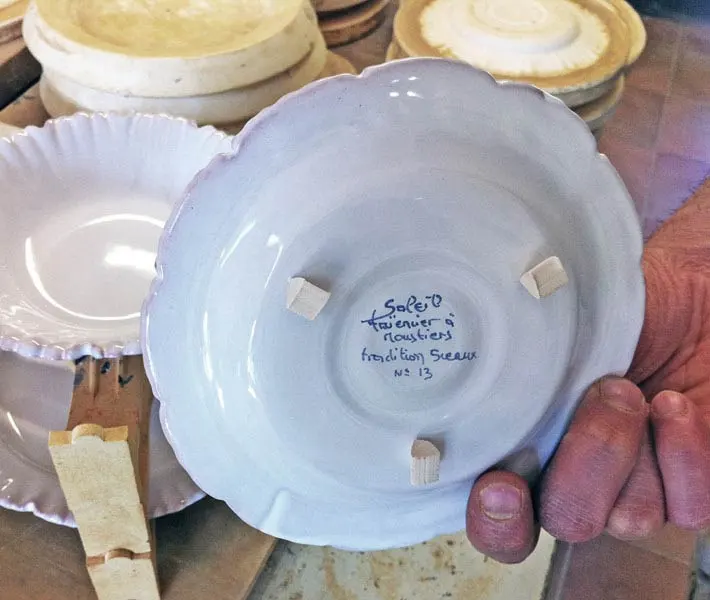Faience is an art with its own language: here are some key words to help you decipher what the master faience maker is saying.
Barbotine: White liquid clay used to glue together faience parts before cooking, for example a loop or a teapot spout.
Biscuit: Faience after a first cooking at 1,020 degrees Celsius. The clay is then hardened but still porous, ocher in color. The biscuit is then plunged in a glaze bath.
Glazing: Once cooked, the biscuit is plunged in a glaze bath using pincers: it absorbs the glaze instantly so the faience maker must move fast. At this point, the piece is ready to be decorated before its second cooking, which will vitrify the glaze.
Faience: earthenware covered on the front and back with white glaze. The term comes from the Italian town of Faenza, which became famous for its ceramic production in the Renaissance. Earthenware faience is one of the oldest techniques used in ceramics.
Solanée flower: Typical design in the Moustiers tradition, consisting of symmetrical bouquets of three or four flowers around a central motif.
Grotesque: Decoration introduced in Moustiers tradition by Joseph Olérys (1697-1749), inspired by various scenes and performers from the Commedia dell’Arte.
“Petit feu”: Literally, small fire. Technique consisting in painting on cooked glaze, with a third firing at a lower temperature. A delicate process that delivers very bright colors.
“Poncif”: Tracing paper that is sometimes used by decorators. The lines of a drawing are perforated with tiny holes on the tracing paper, which is then applied to the piece and lightly tapped with a pouch filled with carbon powder, revealing an outline for the painter to follow. This traditional technique goes back to the 18th century and should not be confused with industrial chromolithography.



